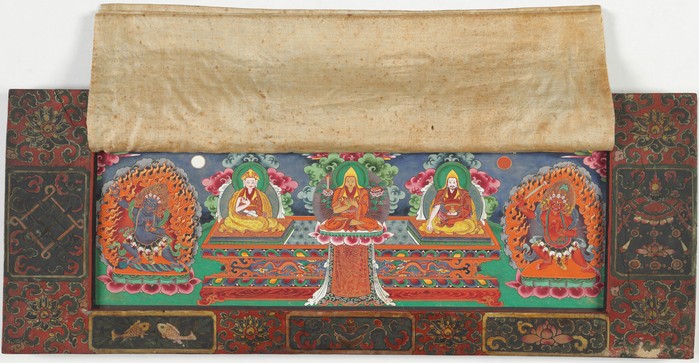
Buddhist Scroll
1612
Block print scroll with lacquered wooden covers and silk curtains
Bequest of Sir William Dixson, 1952
SAFE/X74/1
Block print scroll with lacquered wooden covers and silk curtains
Bequest of Sir William Dixson, 1952
SAFE/X74/1
The scroll is a block print, comprising 20 folios of 26 lines to a page. Folio 1 is printed on one side only, and has thunderbolt decorations in the margins. The two lacquered wooden covers each have an elaborate coloured painting in the Hindu style with four figures, one possibly depicting Buddha, in a recess covered by three-fold silk coloured curtains. This version of the sutra is described and translated in The Diamond Sutra by Nicholas Poppe, which was published in 1971.
Sutra is a short text or aphorism, or a collection of aphorisms, in the form of a manual, or more broadly a text in Hinduism or Buddhism, prepared for memorising. Literally, it means a thread or line that holds things together, and is derived from the same root verb as the word ‘suture’. Like many Buddhist sutras, the Diamond Sutra begins with the phrase ‘Thus have I heard’.


 Back to list
Back to list